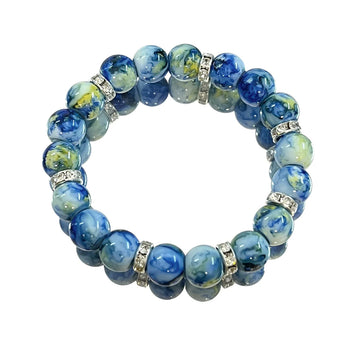Identifying Jadeite Bangle Quality and Assessing Its Value Through Texture and Transparency
Jadeite bangles, prized for their rarity and cultural significance, derive much of their value from two critical factors: zhong (texture or structure) and shui (water or translucency). These terms, rooted in traditional Chinese jade evaluation, describe the stone’s internal composition and its ability to transmit light. Understanding how to assess these qualities empowers buyers and collectors to distinguish high-grade pieces from lower-quality alternatives without relying on brand names or market hype.
Analyzing Texture: Grain Structure and Internal Clarity
The texture of a jadeite bangle refers to the size, arrangement, and visibility of its mineral grains. High-quality jadeite exhibits a fine, uniform grain structure that appears smooth and consistent under magnification. This tight internal composition allows light to pass through without significant scattering, creating a luminous, almost glassy appearance. To evaluate texture, hold the bangle under natural light and rotate it slowly, observing how light interacts with its surface. A piece with excellent texture will reflect light evenly, with no visible “cloudiness” or granular patterns.
Lower-grade jadeite often has coarser grains, which disrupt light transmission and result in a duller, more opaque look. Some stones may contain inclusions—natural mineral deposits or fractures—that further diminish clarity. While minor inclusions are common and acceptable in many pieces, excessive or prominent flaws can significantly reduce value. Use a jeweler’s loupe (10x magnification) to inspect the bangle for inclusions, focusing on areas near settings or carvings where they might be concentrated.
Evaluating Water: Translucency and Light Performance
Water content in jadeite is not about literal moisture but the stone’s ability to transmit light, creating a sense of depth and fluidity. The highest-grade jadeite, often called “ice jade” or “glass jade,” has exceptional water, appearing nearly transparent with a crisp, vibrant glow. To test water, place the bangle against a light source or a white background and observe how much light passes through. Thicker sections of the bangle should still allow some transparency, indicating superior quality.
Mid-grade jadeite may have moderate water, appearing semi-translucent with a softer, more diffused light. These pieces often exhibit a subtle balance between opacity and translucency, which some collectors prefer for its understated elegance. Lower-grade jadeite, however, is highly opaque, resembling stone or ceramic, with minimal light penetration. While opaque jadeite can still be beautiful, it lacks the luminous quality that defines high-value pieces.
Color Interaction with Texture and Water: Enhancing or Diminishing Value
Color plays a pivotal role in jadeite valuation, but its impact is inseparable from texture and water. Vivid, evenly distributed colors—such as imperial green or lavender—are highly sought after, but their brilliance depends on the stone’s ability to transmit light. A jadeite bangle with fine texture and high water will display color with remarkable intensity and clarity, as light enhances the hue’s saturation. Conversely, a stone with poor water may appear washed out or patchy, even if its color is theoretically desirable.
For example, a deep green jadeite bangle with coarse texture might look muddy or uneven, reducing its appeal despite its rarity. Similarly, a pale lavender piece with excellent water will shimmer with an ethereal quality, often outperforming darker stones with inferior translucency. When assessing color, always consider how it interacts with the stone’s texture and water, as these factors collectively determine its visual impact.
Assessing Craftsmanship and Its Influence on Perceived Value
While texture and water are inherent to the stone, craftsmanship affects how these qualities are presented. A well-cut jadeite bangle will maximize light reflection and transmission, emphasizing the stone’s natural beauty. Look for smooth, symmetrical curves and a consistent thickness around the circumference, as irregularities can disrupt light flow and create dark spots. The inner edge of the bangle should be polished to a high sheen, ensuring comfort and preventing snags on clothing.
Carvings or engravings on the bangle should be precise and free of chips or rough edges, which can detract from the stone’s overall appearance. High-quality craftsmanship enhances the perceived value of even mid-grade jadeite by ensuring the stone’s best features are showcased. Conversely, poor workmanship can diminish the appeal of a high-grade piece, making craftsmanship an essential consideration in any assessment.
By mastering the principles of texture, water, color interaction, and craftsmanship, collectors and enthusiasts can make informed decisions about jadeite bangle quality and value. This approach prioritizes the stone’s inherent qualities over market trends, ensuring a deeper appreciation for one of the most revered gemstones in history.







